SeptemberList of articles
0 Comments
From the book The Nature of Substance: Spirit and Matter by Dr Hauschka LIMESTONE AND SILICA Projective geometry provides us with a mathematical illustration. One can think of the surface of a sphere as having two possible origins. The usual concept pictures it as an equal expansion from a central growth-point. Every point on the circumference thus has a static connection with the centre. This concept underlies all our building, the statics of a house, the stability of the physical universe. The alternative method of arriving at the surface of a sphere is just the opposite. Form-creating planes approach the emergent shape from infinity, becoming tangents of the sphere thus enclosed. Such spheres are therefore infinity-created hollow spaces, not solid bodies. Every point on the surface is linked with infinity, rather than with a centre (figure below). This shaping with the cosmic dynamics of infinity is the silica process, which manifests in a fixed form as the substance, silica. It is the force active wherever surfaces come into being: the surfaces of ocean waves and mountains, the epidermis of plants, the skins of man and animals, the membranes enclosing their internal organs. Silica serves as an excellent example for pointing out the difference between substances as the dead mineral end—products of a process and that process itself — a distinction we shall have to learn to make. The silica process is by no means bound to the substance silica. Only where its activity has been intense, does — material silica come into being. Substances are the final stage of processes. Future references to ‘substance processes’ are to be understood as meaning the dynamic activity preceding the emergence of physical matter. Birds are the creatures most closely related to the silica process. Material evidence of this is found in their feathers, ashes of which yield up to 77% silica. The silica process here is not limited to the feather—enclosed bird form; it is the force which relates birds to the entire sphere—shaped mantle of air that encloses the earth. Atmospheric strata arc themselves permeated by the silica process, for their surfaces were formed by its tangential planes. It is not just strength of muscle that enables the eagle to spread his wings and lord it over the heights in majestic flight: it is the profound relation of his being to the silica process active in the airy realm. Gliding is a first step in the same direction, a sport in which man has to develop a special qualitative sense for and sensitivity to the cosmic laws of atmospheric space. It is a sense that borders on perception of imponderable reality. An understanding of the silica process could contribute toward a future mastery of the air, which is structured throughout of plane-surfaces. How different a picture limestone gives! Here we find no such affinity to water as silica possesses, but rather an inclination to aridity. There is no such thing as colloidal lime. Our path to an understanding of its nature cannot therefore trace a relationship to water, as with silica, but rather a connection with dryness. Now the greatest intensification of which dryness is capable is combustion. Firing produces what we call burnt lime, but leaves silica completely unchanged. Lime in its natural state has a greediness, evident in its tendency to absorb liquids, gases and odours. Burnt lime carries this characteristic to an extreme. In the process called slaking, for example, it sucks up water with such ferocity as to cause hissings, clouds of steam and even explosions, so that it has to be very cautiously handled in the lime— pits. Slaked lime is made by pouring water on to quicklime. And though one might think this would satisfy its thirst, it goes on and greedily sucks up more carbonic acid from the air, until it becomes hardened stone again. That is why lime is an ingredient of the mortar (a mixture of sand and slaked lime) used in construction work. Burning: CaCO3 (lime) → CaO (burnt lime) + CO2 Slaking: CaO (burnt lime) + H20 → Ca(OH)2 (slaked lime) Building: Ca(OH)2 (slaked lime) + CO2 → CaCO3 (limestone) Lime is thus related by its character to the statics of building, the firmness of our physical frames, the equilibrium and stability of earthly phenomena. The image above pictures the contrast between the dynamics of the cosmic sphere and the statics of the earthly globe. The latter is built up from a central point and obeys the laws of terrestrial space, while the former is shaped by the peripheral forces of infinity. We seldom think of the extent to which as earthly beings we are bound up with the balance and stability derived from the lime-process. Gravity would drag us down into bottomless depths if the earth’s solidity and the statics of buildings were not there to counteract it and to hold things in balance. And we can thank the lime in our bones for the firm support they give to our bodies, for our balance and our upright posture. Our skin, then, is that part of us built by the cosmic silica process while our skeleton is the expression of the stable earthly minerality given us by the lime-process. With our ‘skin and bones’ we are stretched between the two polar cosmic forces, silica and lime. Silica shapes from the circumference, lime from the centre. The dynamic relationship is essentially that of circle and radius.
Sophia Turner had made the Church of Lazarus her spiritual home. It is also the place where the ashes of her late husband, Brian, are interred. Every Sunday Sophia would attend the Sunday Service for Children and then, without entering into any conversation with anyone en route, she would take a jug of water to the Yesterday, Today and Tomorrow bush planted over the ashes of Brian and she would water the bush and spend some time in contemplation.
Sophia moved to Cambridge, England, on the eve of the Covid lockdown to be near her daughters and granddaughters. When she discovered that she had cancer she took this on as part of the journey of this life, endeavouring to understand what this meant in her biography. She died well prepared and in full consciousness on Friday 8 July. It was obvious that her ashes should be interred with those of Brian in the Memorial Garden of the Church of Lazarus. Sophia's daughter Dani with her husband and two daughters arrived in South Africa on Monday 8 August. The Act of Consecration for one who has died was held on Saturday 13 August and Sophia's ashes were interred next to those of her husband and a yellow clivia now makes the place next to the Yesterday, Today and Tomorrow bush. Many people who had known Sophia, including her Latin American dance teachers, then gathered to speak about Sophia, her life and the impact she had had on others. The vase of sunflowers that adorned the tea table was sent by a friend from Windhoek who could not make it to Johannesburg for this special day. The vase itself, painted chalkboard-black, was decorated by Sophia's granddaughter. Module 1 of 2022 (5 to 7 August 2022) |
| So now I bow my knees before the Father in whom all beings in the heavens and on the earth have their birthplace and their home. May HE grant you, out of the wealth of HIS light-glory, that the higher power may take hold of you which through HIS Spirit brings to birth the Inner Human Being in you. This happens when the Christ dwells in your hearts through your faith, and when you are firmly rooted and grounded in love. Then you will also have the power, together with all who have a share in the salvation, to grasp what the secret is of length and of breadth, of height and of depth; you will comprehend the love of Christ which is greater than all comprehension, and you will be filled with all the fullness of the highest God. To HIM who can fulfil beyond all measure what we ask for or what we simply carry in our minds, in that HE lets higher forces become active in us: to HIM belongs all the glory of revelation which enlightens the community through Christ Jesus in all generations and in the ages of time to come. Amen. (This is an extract form the Jon Madsen rendition which is a translation by Emil Bock.) |
There is going to be a higher power at work in us when we are active. This higher power will not spring into action until we get ourselves going. When we cooperate with this higher power, more will happen than we could ever have even asked for or imagined. Something extraordinary happens that is not because of ourselves, but it would not have taken place without us. We must be present. The higher power in us is the “I”-organisation, the Christ-in-us. We hear it eight times in the Act of Consecration of Man: “Christ in you.” Christ is in us. We walk the path because Christ is in us. Christ is not accompanying us. Christ makes it possible that we can do ever more than we could have ever asked for or imagined. That is what it is to be a petitioning human being: I lay claim to my capacity to be human and I know that that is made possible, graced, and expanded by Christ-in-me. This changes the way that we pray and the way in which we see that our prayers are answered.
In the seasonal Gospel Reading the theme was: “ask and you will receive, seek and you will find, knock and it will be opened to you”. We should stop focussing on the ‘ask’, seek’ ‘and ‘knock’ and rather turn our attention to ‘you will receive’, ‘you will find’, and ‘it will be opened’, start working with a that as a reality, because it is real.
If we keep knocking and don’t notice that the door has been opened, we remain outside knocking. If we keep asking and do not recognise that we are receiving, we keep asking like a child. If we keep seeking and don’t realise we have it already, we never stop journeying without ever enjoying the fruits of the journey.
When we understand how we are constituted as a human being, how we are theosophy, it may change the way in which we petition. It does not mean that we don’t pray for others, but the only thing we can pray for is that they will come into the realisation that they need to come to and that they will find the grace in their lives that God will afford. There is no more we can ask for. Think of the Trinity epistle: “Our substance is his substance”. We are made of the very substance of God. It is the only thing that God can give us, the essence of His substance. With that we can experience more than we could ever do or imagine.
Solomon was anointed King by Zadok the Priest and Nathan the Prophet: Priest, Prophet and King, borne by three separate people at that time. He was given the task of making visible in the world the place that would be the Holy of Holies where the Ark of the Covenant would be kept, until this could transfer from being a place in the temple to being a place in the human constitution.
King Solomon is known for many by two stories: the story that exemplifies his wisdom when he is asked to decide who is the mother of a baby and the story of the Queen of Sheba which exemplifies his great wealth and his standing as an international figure, a cosmopolitan leader of world repute.
In the story of the baby, two unfaithful women, who each had given birth, come to see Solomon because the one woman had accidentally smothered her baby. She then claimed to be the mother of the other woman’s baby and that the other woman’s baby was the dead baby. Solomon resolves the situation by offering to cut the living baby in two with a sword so they can each have half. The true mother capitulates to save the life of her child and agrees that the baby belongs to the other woman, while the woman with the dead baby is happy to have the other child also killed. Thus, Solomon knows who the real mother is. They are unfaithful to each other and unfaithful to their grief and loss. The sword is the sword of truth. This is a story of faith rather than a story of prostitution, as these women are referred to in many translations.
King Solomon married many foreign women besides the daughter of Pharaoh. We can go to Abraham visiting Egypt with his wife Sarah and introducing Sarah as his sister who married the Pharaoh. It was the daughter of the Pharaoh who became the stepmother of Moses. The concept of the Pharaoh’s daughter is significant. It means Solomon is aligning himself with all sorts of spiritual cults. Solomon married into the family whose ancestors spiritually enslaved the Israelites and would not free them to find their path with YHWH (Yahweh of the Elohim). Solomon married women from the very nations that YHWH had commanded the Israelites not to marry – YHWH wishing to isolate the Israelites from the influences of these nations. But Solomon reaches out in order to be cosmopolitan, being an international diplomat. He created relationships with all of the tribes by marrying women from the tribes. YHWH forbade the marriages for fear that the women would take the hearts of the husbands and lead them to worshipping their gods, thus leading them away from YHWH and his mission for humanity. Solomon does build temples for his wives to worship their gods. Solomon had 700 wives of royal birth. This represents a very powerful span of time. He had picked up all of the developed nations. He also had 300 concubines. Solomon had 1000 women: ten times ten times ten. In his old age his wives led him astray to worship their gods. This is why Solomon was not the greatest king, and David remains the greatest king. David never faltered in his duty to YHWH. We might think of Solomon as a great king who goes to great lengths to incorporate the tribes of the world, building economic and political relationships with all of these tribes. He was the “bearer of peace” by name and by action. He gave his wives the complete freedom to worship their own gods. YHWH appeared twice to Solomon to instruct him to set aside his wives and their gods. On the third occasion YHWH made it clear that the choice was Solomon’s: to increase the wealth of the nations, to make peace with all others, become the centre of the known world, but that he, YHWH would take away the kingship from Solomon and give it to his servant, but only after Solomon’s death. One tribe, the Kingdom of Judah, would be given to Solomon’s son in order to protect Jerusalem which YHWH has chosen.
Solomon is referred to by seven names in Proverbs: a full span of the human being. In Anthroposophy we would consider these to be the physical, the etheric, the astral, the Ego, the Spirit Self, the Life Spirit and the Spirit Human. Solomon represented all of these as the bearer of peace. But because he builds human relationships ahead of his relationship of YHWH, he must pay the price.
The book of Proverbs is known as the wisdom of Solomon but in chapter 30 it is describes as the words of Agur, son of Jakeh king of Massa. It is another name for Solomon that represents a quality of Solomon. Then we have the words of Lemuel king of Massa. Massa is another name for the nation of Israel. The seven names of Solomon are:
- Agur is the gatherer; Solomon in his physical capacity as a gatherer.
- Jakeh is son of the devoted one, the son of devout obedience or discipline which is an etheric force in Solomon.
- Lemuel is the one consecrated to God.
- Ithiel is the one filled with God which represents the I-organisation of the human being. (Today it is no longer the presence of El but the presence of Christ.)
- Solomon is the bearer of peace.
- Kohelet is the teacher (rabbi).
- Yedidyah is the beloved of God.
These are the seven names or descriptions of Solomon which we can align with the seven-fold human being. This allows us to see Solomon as an extraordinarily great person, a wise person, a capable person who can do, organise, manage. His impression on the Queen of Sheba is beyond her wildest dreams; the descriptions she had heard of him do not do justice to what she discovered.
Solomon had the wealth and riches and the inflow of prosperity to build the temple which his father, King David, did not have and therefore YHWH forbade him building the temple.
Solomon who was more exoteric than his father David and had the capacity to build an exoteric building to house the secret, the Holy of Holies, the inner sense of the connection of the people of Israel and the great mighty spiritual being that represented God for them and was their chief angelic connection with the Divine. The building of the temple is placed in a historical context in the Scriptures. It was built in the 48th year after the Israelites had left the land of Egypt, in the 4th year of Solomons reign over Israel, in the month of Zim which is the second month. It was a temple to YHWH and was a temple of communication in which the Israelites could connect to YHWH. YHWH is an Elohim, a mighty formative force being. The building of a house in which one could communicate with this mighty being of form was quite an extradentary achievement. It was the third great creation of a sacred space.
The first was the building of Noah’s ark. This was a house that would house all of YHWH’s forms, the human, the animal; the living, moving, breathing forms until the waters subsided and all the plants, all that can be cultivated and create the space for the human being to live, had returned. This is a picture of building a sacred space, an ark, the word that in Hebrew means coffin. Noah and the animals are going through a death from one form of existence and are being born anew through the water of the flood like the waters of baptism into a new experience of life on earth. We speak of a post-diluvian world, Steiner speaks of post-Atlantean epochs and cultures. The whole world at one time was Atlantis and then it flooded and the floods subsided and a new world appeared.
Second was the Ark of the Covenant in which the Law could be placed: the holy contract with YHWH.
The contract must now live in a house in which people could gather. The house was described as three-folded. In the Hebrew of the first Book of Kings the words for the three parts of the temple of Solomon are not originally Hebrew words; they were borrowed from the Accadian language. This language was usually codified in Cuneiform and later in an Accadian script similar to the Arabic and Hebrew. It was the language of the Phoenicians. We have already looked at the parallel between the Lord of Israel and the Lord of the Phoenicians, the Lord Their God, YHWH of the Elohim – Adonai – and Adonis the lordly being of the Phoenicians.
The builder of Solomon’s temple is a Phoenician. Solomon builds a Phoenician building in its interior and exterior design. It shows the cosmopolitan nature of Solomon, and it would have been quite splendid. The building itself was much smaller than one may realise. The temple would have a looked like the chapel in a large palace complex of today, such as St George’s Chapel in Windsor Castle:
The vestibule was half as long as it was wide. The long room was twice as deep as it was wide which held the altar for the burnt offering and the seven branched candelabrum and the table with consecrated bread on either side. Then the third room with the curtain of four colours, the Holy of Holies.
From Philo to Thomas Aquinas to Martin Luther theologians have identified that the three-fold temple represented the three-fold human being. Entering the vestibule was to enter the body of the building, then entering more deeply one entered the soul realm in the Long Room and then the Holy of Holies was the spirit of the temple which represents the spirit of the human being. The form of the temples represented the form of the highest achievement of YHWH and the other Elohim in the creation of the world: the human form: body, soul and spirit.
The Temple Legend, very popular among the Rosicrucian, tells that when the Queen of Sheba came to visit Solomon the temple is in the process of being built. When she entered the temple for the first time her reaction was recorded in many writings. The most astonishing of these appears in the Qur’an. As the Queen of Sheba stepped into the temple the floor was so highly polished and the moon shining through the windows causing a reflection on the floor giving the Queen the impression that the floor was flooded, and she lifted her skirts so as not to wet them as she walked across the floor. This temple was a moon temple connected to YHWH who operates from the sphere of the Moon which is a reflection of the Sun. It was not a light in itself. YHWH is not El, he was a reflection of El to the people of Israel with an exceedingly important task. YHWH is the leading Elohim of Earth Evolution.
In the Temple Legend the Queen of Sheba also meets Hiram. She was very connected with the old ways, while Solomon was very much a descendant of Abraham with clear, brain-based thinking. He was filled with understanding and wisdom and a cosmopolitan leader, connecting with all the nations, marrying princesses from each nation, making Jerusalem a place of destination and pilgrimage. The Queen of Sheba was more connected to atavistic wisdom. When she heard of Jerusalem she was driven to visit it, rather than making a conscious decision to visit it. For her it was a knowing that this what she must do rather than a thought through process. She was taken with the design and craftsmanship Hiram was introducing to the temple and Solomon became jealous of Hiram. He believed that the Queen of Sheba considered Hiram to be more informed and developed than he was and as a result Solomon decides that Hiram’s secret must die with him and, according to the Temple Legend, not the Book on Kings, Solomon ordered the death of Hiram. In this legend Solomon was seen as being descended from the stream of Abel and Harim was descended from the stream of Cain and especially Tubal-cain. The impulse of Abel was transferred and carried by the son Seth who was born to Adam and Eve after the slaying of Abel. The Temple Legend understands something of the origins of Cain and Abel. The origin of Cain is pre-Paradise, out of a conception that belonged to before the Fall. Abel was a conception after the Fall. Therefore, there were two streams, one in touch with the arts and creativity and through human, artistic activity creating a human paradise, and the other taming and managing the earth, taking hold and cultivating the land and keeping flocks. Cain grew crops in order that the life forces would grow from the earth and the gift he brought to YHWH were all derived from the sun-forces of growth. Abel brought a gift that derived from the moon forces: the first-born of his flock and herd. Cain killed Abel. In the Temple Legend the Abel stream took revenge on the Cain stream and nothing changes. There is no restoration from the first offerings to YHWH to the House of YHWH. There is a deep division in the human experience that involves death. There is no hope of renewal, resurrection and new life.
The renewal comes through Christ. And the curtain of the temple was rent from top to bottom. It was so high that it would not have been possible to tear from top to bottom without high ladders. The tearing from top to bottom meant that the Divine world tore the curtain, opening the veil, exposing the Holy of Holies. There is no longer a hidden place out in the world, the only hidden place now resides in the human being. As a result, there is no longer a temple in the world, the temple is now in us. Our body is the temple of the Divine, the Holy Spirit, according to St Paul.
Hiram is known as the son of the widow. The reference to the son of the widow means that Hiam was a Phoenician. Adonis was born after the death of his father. In the myth of Isis and Osiris, Isis gave birth to Horus after Osiris was killed. The great gods therefore were the ‘sons of the widow’. It became an esoteric descriptor of one who had been through an initiation; an initiation, one might say, into the mindset of the gods. It gave them the ability to work like a priest. Therefore, the temple was built by a high initiate, someone who could work in the space of a priest. Solomon was king, anointed as king, but he was not priest. He was not initiated into the great wisdom of the esoteric mysteries, and he failed to build the absolute connection to YHWH, in the way David, his father had. Solomon remained entirely worldly and failed in the one aspect in which his father remained steadfast, despite his many other failings. Hiram could build the temple because he was a great initiate. In the Gospels we have the only son of the widow being carried out of the city on a bier. Therefore, we know that this young man was not dead but in a temple sleep. It may be that he was experiencing a former initiation and needed to raised from the temple sleep, which Jesus did and presented him to his mother. The initiation allowed the person to spend three days in the spiritual world in a way that would allow the person to return with knowledge that would advance humanity. They would return as a new human being.
This report represents the end of the Old Testament Study that began in November 2020. There will be further studies of aspects of the Old Testament, and these will be announced in time. They will most likely not occur again on a Saturday as it appears that a more suitable day and time needs to be considered for everyone interested in participating.
*The Temple of Solomon in Iron Age Context
Yosef Garfinkel ** and Madeleine Mumcuoglu
Institute of Archaeology, The Hebrew University of Jerusalem, 9190501 Jerusalem, Israel;
[email protected]
** Correspondence: [email protected]
Received: 24 February 2019; Accepted: 13 March 2019; Published: 15 March 2019
This is a two-part series of talks delivered on 14 and 21 August 2022.
The first thing is to establish a historical context for the Tarot. There is evidence throughout human history of the use of objects in the playing of games. These include playing cards and the moving of objects on a board of some description. These games were generally played for amusement or distraction, sometimes involving wagers and the exchange of money, but there also existed what were considered to be sacred cards that had a purpose in some form of ritual. These sacred cards carried symbols that had a deeper meaning and may have been restricted for use to priests and initiates.
Playing cards akin to the cards we still use today, arrived in Europe in the early fifteenth century. The Tarot can be traced back to about the same time in Europe. Playing cards, as we know them, are divided into two types, the pip cards and court cards. The pip cards have a numbered sequence of symbols depicted on them while the court cards depict members of the royal court. Decks of playing cards are divided into four suits and there are thirteen cards in each suit of which three are court cards and ten are pip cards. This makes up fifty-two cards and there are typically two additional cards that are known as Jocker cards that may, in some instances, be used as wild cards (i.e., the Jocker may be used to signify any other card in the deck).
The symbols depicted to represent the suits and the pips differed from culture to culture.
- The French used hearts, tiles, clover and pikes.
- The English used hearts, bells, acorns and leaves.
- The Swiss Germans used roses, bells, acorns and shields.
- The Italians used cups, coins, clubs and swords.
The cards that we still use today were largely influenced by the symbols used by the French. The tiles becoming diamonds and the pikes becoming spades while retaining the point of a pike that explains the shape we see on the suit of spades. This array of different symbols influenced the symbols that became used for the Tarot.
Playing cards were extensively used in games by soldiers and were used by patrons in taverns. The Arabian army had battalions of foot soldiers that were non-Arabs who were working off some form of servitude who were known for playing card games. There are references in Turkey predating the fourteenth century of playing cards that may be as early as the eleventh century.
It appears that from the earliest use of cards they were also used as a way of gaining insight into peoples lives and events through different methods of randomly selecting cards from the deck. This was very distinct from people who seriously used the stars and constellations, their placement and alignment at birth, and on a particular day, to determine how these may speak into the destiny of a human being.
It is only in the nineteenth century that the Tarot came into its own. These cards pre-existed their incorporation into the Tarot as Italian playing cards. The name derives from the Italian tarocchini which is a diminutive of the tarocchi that was a deck of 68 or 72 playing cards. The French called these cards ‘tarot’ which is why the word still has a silent ‘t’ on the end. The Germans had a game that used the full 78 card deck called Großtarock. The tarot then used the standard deck of cards, the ten pip cards and four court cards, as the minor arcana (minor secret cards), a total of 56 cards and developed a separate set of 22 cards that are known as the major arcana. The cards of the major arcana do not belong to a suit and each card represents an archetypal image.
The wand suit is associated with the element of fire and passion; therefore it is associated with action and the will. My wand can only perform magic for me. I am the wand that brings about change in my life.
The cup, that can contain liquid, is associated with water and the idea of one’s cup being full and therefore this suit is associated with the expression of the human being in their feeling life.
The sword represents truth as we have in the Book of Revelation which presents the image of the two-edged sword coming from the mouth of the Son of Man. The word has the power of a two-edged sword, it can cut both ways. This is possible through clear thinking. The suit of swords belongs to the element of air and is associated with thinking or the intellect.
The suit of coin represents the physical reality or the element of earth.
The four suits represent the three qualities of soul: willing, feeling and thinking, and what it means to have a physical body. Therefore, the cards are a way of understanding ourselves and what we may need to wake up to at any time.
Firstly, here is an understanding of number. This comes from work on the tarot and also from the work of Rudolf Steiner. He did not speak on the tarot but on The Esoteric Book of Ten Pages. Only one of the two lecture he delivered on this book remains in existence, but this first lecture provides a lot of clues of what the second lecture would have included. One can consider that each of the pages in The Esoteric Book of Ten Pages is a card.
The first number in the deck of cards is the ace which stands in the place of the number one. One is usually the number associated with birth but it also represents, more importantly, according to Rudolf Steiner, the idea of wholeness, of integrity. In other words, when we are born, we are born whole; all of us is there, not yet developed but all of it is present. We do not have to wait for something to be added to us, it is all there in the child at birth. It still needs to develop and unfold, but there is nothing that still needs to be added. This unfolding occurs within and is expressed outwardly.
The number two for many who use the tarot signifies a pair, twins. This should bring to mind the constellation of Gemini. Twins, a duet, a polarity in balance, yin and yang, male and female. These are the two sides that make up the whole. This takes us from wholeness to what the two elements are that make up the whole. Steiner speaks of the important idea of polarity in balance. There is one side but then there must always be another side otherwise we are out of balance. This brings two into association with balance and this concept reappears at two times two and two time two times two. At four and eight we return to the idea of balance. There is a connection between two, four and eight.
The number three often represents growth. For Steiner the number three is connected with the extraordinarily important idea of three-foldness. The human being is three-fold: body, soul and spirit. When we study the Old Testament, we are reminded that the temple of Solomon is made up of three spaces: the vestibule, the long room and the Holy of Holies. Many theologies have read into this the model of the human being: body, soul and spirit. We have become as St Paul states, the temple of the Holy Spirit. The Holy Trinity also reminds us that the idea of three-foldness is all around us. The three-foldness of the Divine is represented in the human being and in so much of what has been created. The concept of the Trinity: Father, Son and Spirit has taken on a very masculine identity and it is important to take it back to the very Ground of Existence, the parent-stock out of which generation and creativity and birth comes about and the relationship between the two that brings something new into being. Therefore, it is possible to imaging in the Divine Trinity that the Holy Spirit is that which lives between the Father and the Son: that which lives between the Ground of All Being and the Creative Force of All Being. Therefore, when we pray and place ourselves within that connection, much like Christ in Jesus prayed, and we open ourselves up to the Ground of All Being, we are living within that connection and living in the Spirit between the Father and the Son.
The number four is balance in solidity: the square. This is a very solid form. It is the base from which a cube can appear and is an exceedingly solid structure, well balanced and really holds itself.
The number five, Steiner says, is one beyond four. We experience ourselves today as a four-fold being: physical body, formative life force, soul-sentient body and a sense of one, the I-ness of myself. But, the number five is also a representation of the human being as was illustrated in the Vitruvian Man or a child’s stick drawing. The number five brings about the idea of a challenge, an additional element, something new. It represents a new element: quint-essence (quintessence); the fifth essence. Shakespeare speaks of the human being as the “quintessence of dust”. The number five is connected with challenge, dynamism, of coming into something: the human being, one might say, on the earth, not just the human being as a spiritual idea. It represents a grounded reality.
The number six, Steiner says, has something to do with ideals. In the tarot it is often considered the number for resolution. When something is resolved, an ideal has come about. Steiner says that whenever there is an ideal one can find it represented in a three-foldness with a resonance in another three-foldness that has been elevated to a higher understanding. Three forms the base of an idea with the resonance at an elevated level forming six. An example is the philosophical cry of the French Revolution: liberty, equality and fraternity that find resonance in freedom in our thinking, equality in our feeling and fraternity in our actions. Ideals are combined in six and they resolve something, they bring it to its own stage of resolution.
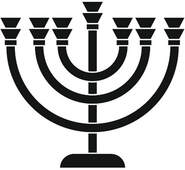
The number eight is balance in stability.
The number nine is the number of accomplishment: three squared. Three represented a three-foldness, six represents resolution and nine accomplishment. In Theosophy Steiner also describes the human being as a nine-fold being: having accomplished the full expression of being human. There are also nine Hierarchies of Angels. This is an accomplishment.
The number ten has always represented completeness. The entire law is in the Ten Commandments. The ten plagues that the Egyptians suffered meant that they were completely plagued. Ten means that it is done. The cards do not figure the number eleven and twelve. Twelve would be a wonderful number but ten represents completeness.
We can now begin to combine the numbers with the suits. A five of wands would represent a challenge for the will. Five of swords would represent a challenge to be thought about and spoken. A five of cups would represent a challenge in the emotions: how full can I make my cup?
The court cards are the page, the knight, the queen and the king. Some people work with the page and queen cards as representing feminine energy and the knight and king cards as masculine energy. The picture presented here is one picture and is presented in terms of the suits. The page represents a certain intellectualisation. The page must be wide awake. The knight must be passionate. The queen carries deep, well-grounded emotion – the heart forces that are strongly feminine. The king must be centred.
- The page of wands represents intellectualised will, in other words faith.
- The page of cups represents intellectualised emotion, in other words the capacity to study.
- The page of swords represents intellectualised rationalisation, in other words the ability to think clearly thereby to know the secret. I know the secret because I am well endowed with the knowledge of it.
- The page of coins represents intellectualised centre, in other words a capacity to focus.
- The knight of wands represents passionate will, in other words a capacity to depart.
- The knight of cups represents passionate emotion, in other words the capacity to propose something.
- The knight of swords represents passionate intellect, in other words the capacity to take charge, or take hold something.
- The knight of coins represents passionate centre, in other words a capacity to caution.
- The queen of wands represents emotional will, in other words a capacity for friendship, the ability to act as a friend.
- The queen of cups represents emotional strength, in other words the capacity to parent.
- The queen of swords represents emotional intellect, in other words the capacity for independence and to think for oneself.
- The queen of coins represents emotional centre, in other words a capacity for security.
- The king of wands represents centred will, in other words honesty.
- The king of cups represents centred emotion, in other words an ability to be a partner, a soulmate.
- The king of swords represents centred intellect, in other words the ability to operate from a true ethic: values.
- The king of coins represents centred grounding, in other words a capacity; the ability to do anything.
Herein one can see that every card speaks to some aspect of our lives. The cards open up for us the reality of what it is to be human; they are all a part of our journey of our life.
The major arcana is about the journey.
The first card on the journey is the un-numbered card, the Fool. Much of literature, such as the story of Parzival by Wolfram von Eschenbach, has the main character start off life as a fool. Parzival is even dressed in fool’s clothing. The fool goes forth where angels fear to tread. The human being undertakes the journey. We begin our lives foolishly; if we knew all that we would face in our lives we might chose to not incarnate. We have a trait of going forth with foolish abandon and as human beings we make a fool of ourselves a lot. When we look into the mirror it is the fool that looks back at us, essentially. The fool is the only card of the major arcana that has survived into the normal deck of playing cards, as the jocker.
The number I (Roman numeral) is the Magician and represents the power of the journey. If one observes a one-year-old it is magical what they can do, in comparison to what they were at birth: the magic of standing, the magic of speech (mama, dada).
The number II is the High Priestess. There is something quite glorious about a two-year-old when they are at their best. One can begin to see the beginnings of an inner journey. There is a little high priestess in all of us. The two-year-old has mastered the magic of walking. They are proportioned differently and now look more like a child and less like a baby. They no longer wish to be referred to as a baby; they have come into a new space.
The number III is the Empress which represents the conception of the journey. At three the child conceives of something and for the first time is able to say “I”. Three-year-olds assert their independence and will push a guardian aside to go to school: “I go!”.
The number IV is the Emperor which represents the authority of the journey. Four-year-olds begin kindergarten school because they can now stand in their own authority.
The number V is the Hierophant which represents the observer of the journey. A five-year-old has developed the capacity of observation. In schools the five-year-olds will watch the six year olds with amazement because they now are able to realise that this is their future. The four-year-old cannot yet conceive clearly of a future self.
The number VI is the Lovers. This card may represent romantic love, but it is more useful when it represents what a lover must be able to come to terms with; which is the choice. This card represents the choice of the journey. In love one has a choice; one can choose to go with the feeling of love or to reject the feeling to remain where one is. Thereafter there are choices when one progresses in the journey of love. For the six-year-old it is a year of choice, the lover, to be in love with oneself and with life. It is the choice to say yes and sometime to say no.
The number VII is the Chariot which represents the vehicle of the journey. What is going to be the vehicle that will take the person to where they wish to arrive? What is the motivation in life and how will this motivation result in action? Will the person act quickly or slowly and steadfastly?
The number VIII is the Justice which represents the responsibility of the journey. It is clearly possible to see a new sense of responsibility enter into children of the age of eight. In the Waldorf curriculum this is the year in which the children hear all the fables (Aesop’s fables, La Fontaine’s fables) but without the children being told the moral. This is unnecessary because they understand the meaning of the fables, they are able to respond to the fables and live the moral in their lives.
The number IX is the Hermit. Most nine-year-olds will withdraw whenever they find themselves in crisis. It is year of discovering things about oneself. It is a real threshold. Once the Hermit has secluded himself he also realises that the great guiding light is not out there but within.
The number X is the Wheel of Fortune which represents the luck of the journey. The ten-year-old is the heart of childhood. They are expansive and happy and open. They appear to enjoy life.
The number XI is Strength and represents the trial of the journey. The eleven-year-old is quite strong realising there is something to prepare for, something that comes at twelve.
The number XII is The Hanged Man. This is a man hanged upside down by one foot. He is having to pause and his life is turned, in that moment, upside down. That is the life of the twelve-year-old, their life is turned upside down; but they are able to cope with it. It requires the sacrifice of something of childhood to take on the new role. In the Waldorf curriculum everything changes for this age and the child is presented with a pair of compasses with which to draw a precise circle. They sacrifice their free-hand artistic capacity in order to draw the circle precisely. Precision enters their lives and with it new subjects such a physics and chemistry: the subjects that present the basis of a material knowledge. With it the twelve-year-old sacrifices their childhood imagination while taking on new insights through the power of imagination. The picture of the hanged man reminds us of an ancient Phoenician myth of a god who is hung upside down by one foot and drowned in order to be reborn. It is a card that has a connection to the ancient, pre-John the Baptist concept of baptism or initiation.
The number XIII is the card of Death which represents the end of a part of the journey. It may be the origin of a lot of the superstition that surrounds the number thirteen. It represents having to end something through a conscious choice. The thirteen-year-old has a lot of dying to do as it is about to be born with an astral body that is free as a teenager. This is quite a process that the thirteen-year-old goes through.
The number XIV is Temperance which represents the balance of the journey. Fourteen-year-olds struggle to find balance. Physically their rapid growth upsets their sense of balance.
The number XV is the Devil which represents the temptation of the journey. In the Waldorf school the fifteen-year-old is in a curriculum of ideals. It is a curriculum in which they may be tempted to stay, but idealism is not real. The ideal is important but it needs to brought into reality with that which must be faced by what is represented by the number XVI.
The number XVI is the Tower, it is the tower being struck by lightning and crumbling with people falling from it. It is, one can say, the destruction of the tower of Babel. Ideals may face difficulty, even destruction. It represents the grave reality of coming to terms with having landed on the earth. The Waldorf curriculum is strong on groundedness in practical terms for the sixteen-year-old. The ideals were buily at fifteen and now it is the age to ground the ideals which results in the towers of ideals crumbling. This is the great soul question of ‘how?’
The number XVII is the Star which represents the inspiration of the journey.
The number XVIII is the Moon. Eighteen is the year known as the moon-node year when the moon is in the same position within the heavens as on the day of birth. This represents the reflection of the journey.
The number XIX is the Sun which represents the light of the journey. For many people it is the first year out of school with greater independence and having to manage by oneself. In a Waldorf context this is the year of self-management as one tackles academic examinations for the first time.
The number XX is Judgement which represents the realisation of the journey.
The number XXI is the birth of the “I”-organisation and the integration of the journey. It is the card of the World.
The archetypes in the major arcana are extraordinary in the way they follow the development of the first twenty-one years of life. Thereafter they continue to resonate in adulthood is different ways at different times of life. One aspect may be more prominent than the others at one point in our life journey. Sacrifice in order to continue the journey may occur. At another point we may need to take hold of the authority we have to continue on the journey of life. Sometimes we may need to reflect on where we have come in our journey.
Life is a journey and the tarot have been used esoterically to look at the wisdom of this journey of life. Esotericists used the tarot especially to uncover the wisdom of the Kabbalah which was a developing esoteric stream at the same time as the tarot made an appearance. The tarot aligns with human development and with the sense of how we grow up; how we relate in our thinking, feeling and willing; how we can take up the essential elements of our humanity to lift ourselves above the animal.
If we consider that the major arcana, as presented above from the Classic Tarot found in the Rider-Waite pack, represent not only aspects of the journey, but that we can identify ourselves with the aspects described, then we can truly say that in a particular experience we are the Hanged Man, or The Tower, or The Star, or The Chariot – one can experience oneself as the vehicle in a certain situation. We can have the experience that our earthly “I” experiences itself in the aspects of the journey as described.
From about the middle of the nineteenth century the tarot began to be used for divination: trying to determine something of where an individual was in their specific journey. It is possible that this development in the use of the tarot had its origin in the understanding that at the same time as the tarot was being developed the esoteric stream of the Kabbalah was developing. One of the main themes in the Kabbalistic stream was an understanding that the Divine manifests in many different ways. An example is in the Kabbalah Tree of Life where the ten Sephirots or emanations speak to the attributes of the Divine which are also attributes with which we can connect and on which we can reflect in our lives. The idea of the Divine manifestation manifesting in us became an essential aspect of understanding the tarot.
Michaël suggests that when one works with the cards of the tarot that the cards reveal something to one about where one is at. This requires that one begins with an intention. One would then read the meaning of the cards based on the intention one holds seeking to find what one can connect with that opens up something for one’s life in respect of that intention. When we open ourselves and use a tool, which may be the Bible (if we open it to any page and believe that on that page we shall find an inspirational verse for our lives today) or the tarot, that we believe has value it can be useful in revealing something that may indeed be meant for us as a truth that speaks into our lives. Because the use of the tool is personal and not communal it has a lot more meaning, certainly a lot more meaning than a daily horoscope that is intended to apply equally to one twelfth of the world population. The use of the tool, the Bible or the tarot, relies on the personal connection the user makes to the message.
Michaël proposes that in working with the tarot there are four principal questions with the potential to reveal something to us. The cards of the tarot differ from playing cards in that the image on each card has a right way up. This means that when the cards are placed and then turned over they may be right way up or upside down. This also has meaning. A card that is upside down can mean the opposite to its usual meaning or it may mean that the very thing the card represents is blocked in our lives, or in need of special attention. This may that be indicative that we are required to do something that will ‘turn the card around’ in our lives, so to speak. The interpretation of the cards is not set by rules but rather it is sensed through the events of our lives. The cards provide a vehicle through which we can focus, be in on our day, or a particular life situation. It is an opportunity to become conscious of where we are on our journey. The tools one chooses to use cannot predict what is going to happen, they can open an awareness of the possibilities or potential that are open to one. It is then up to the person themselves to take action to realise the possibility or potential that has been revealed. Nothing happens without our activity in the matter.
One uses the tarot in the way described where the suit of Coins represents the physical reality, the Swords the thinking, the Cups the feeling and the Wands the will. Expressions of the earthly “I” came to light through the major arcana.
The questions that have value and the layout of cards that are common to these questions are as follows.
- Who am I? At any point in our lives our earthly “I” experiences itself somewhat differently. We develop and our lives progress in ways that take us to very different expressions of ourselves. ‘Where am I’ and ‘who am I’ at this point in my life’s journey are useful questions. The common layout for this question is three cards placed one below the other so that the bottom cards says something of where one is in one’s body, the middle card says something of where on is in one’s soul and the top cards reveals something of where one is in one’s essential spirit self. The body can reveal something of our physical well-being. The soul card can tell us where we are in the way we relate to our environment and others. The spirit card can reveal something of one’s state of consciousness or awareness to where one is on this journey.
- Where am I? Where am I on the journey? The cards of the major arcana reveal something of where one is in one’s life journey and how this repeats again in adulthood. This is usually a two-card layout placed adjacent to each other. The first card – in the West this would be the card on the left – represents the journey, the second card the progress. This may reveal what path one is on and how the progress on this path is developing. It may also answer the statement: “this is where I am”.
- What are my strengths and weaknesses? Three cards, one above the other to represent strengths in the three area of one’s being and adjacent to these three cards to reveal the weaknesses in the three aspects on oneself: body, soul and essential being. This may offer an opportunity to rethink what is revealed in terms of how they are strengths or weaknesses in our lives. The cards do not define one but the cards rather open up something that has value to explore. The cards open up something within ourselves wherein we open a conversation with ourselves and therein also with the Divine.
- What influences affect my life? This includes the influences of other and the influences I am connecting with. This is often a six-card layout, three adjacent to each other for the influences of others and three beneath for the influences I connect with.
The major arcana holds a fascination for us. Certainly for Michaël it was uncanny how some of the cards of the major arcana matched exactly with the development of the human being from birth to twenty one. This may be a perspective unique to Michaël and it stems from the description of Rudolf Steiner of the developing child. The card numbered XVIII being The Moon matches the moon node exactly and is followed by The Sun and finally The World at XXI when the individual arrives as an adult in the world.
How do these cards relate to things that manifest later in life? The major arcana can reveal something of where the inner self happens to be. Here is what the cards may reveal:
| 0 - The Fool teaches one how to start again. One may have to pick oneself up and start again. I - The Magician teaches one the worth of using tools because the magician needs a wand. II - The High Priestess teaches one the beauty of the mystery. III - The Empress teaches one the value of nurturing the feminine side of one’s nature. IV - The Emperor teaches one the opposite, the value of the masculine side of one’s nature. V - The Hierophant teaches one the reliance one should place on conscience. VI - The Lovers teaches one the importance of the capacity to be able to make a choice. VII - The Chariot teaches oneself discipline. VIII - Strength teaches one that there are things that are good for one and things that are not good for one. One must determine which it is for oneself and not allow oneself to be conned into believing the opposite, e.g., ‘just one more will not harm me’. IX - The Hermit teaches one the power of solitude. X - Wheel of Fortune teaches one always to make an attempt; to keep trying. XI - Strength teaches one that one is actually strong. Rudolf Steiner gave the picture that behind every human being stands our Angel laying its hands on our head, giving us strength. Our strength is super-natural. XII - The Hanged Man teaches one the joy of burdens and hardships. Be joyful that one has responsibilities. Our greatest responsibility is managing ourselves. Many aspects of ourselves do not wish to be taken hold of, preferring the free reign of doing exactly as they please. XIII - Death teaches one that nothing lasts in the same way. Things change. What was, is over and has changed. It is a threshold of transformation. XIV - Temperance teaches one balance. XV - The Devil teaches one that there is a part of one that can trick one into believing what is patently not correct, especially actions that one takes. XVI - The Tower teaches one that one is not going to reach the goal on one’s own efforts. The card asks that we acknowledge that achievements are only possible with others and with grace. XVII - The Star teaches one to believe in oneself. We each have a guiding star and are our own guiding star. XVIII - The Moon teaches one the one can reflect on a whole span of growth. XIX - The Sun teaches one the brightness of truth. XX -Judgement teaches one that one can discern and also that one can pick oneself up. XXI - The World teaches one can strive to find the whole world in oneself. |
0 - The Fool could affirm that one is not afraid to start again.
I - The Magician can affirm that one has the ability to manifest something. The “I” in me is the magic wand that can transform my life and my situation. Another person may assist one in accompanying one or even offering suggestions or guidance, but it is Christian to leave one free to do it oneself. A community of Christians is one of care and not one of direct instruction. With the coming of Christ the centre of authority shifted from an external source of authority to an internal source of authority. We will find Christ in us.
VI - The Lovers can affirm that every essential aspect of life should be about love. The sacramental consultation ritual includes two important words. The first is ‘learn’, the second is ‘love’. Rudolf Steiner said: “The earth was created so that human beings can learn the lesson of love”.
The major arcana can be used as an opportunity to discover where one is and to affirm where one is in life. Each card in the major arcana speaks to what it is to be a human being. Ultimately, all twenty-two cards must appear in us. Even when one has The World and one is The Emperor and one is one’s own guiding Star, one is also always The Fool on the journey. It brings one back down to earth and reminds one that one is “a clown for God” in the words of great spiritual writers. It is profound that The Emperor is not the twenty-first card, but The World: the world in me and me connected to the world, that is the final card.
The cards must reveal something to one that is consistent with all the other understandings one has of life. The tarot can therefore, as revealed in the description above, be related to an aspect of Anthroposophy, to the world view that supports the way in which our community works. Present in the tarot is a design that stems from an esoteric knowledge. There has always been a human understanding that there are many different expressions of life that are archetypal to which one can connect. They make sense to us and we can understand them. In the images and numbers of the major arcana and in the suits and the pip and court cards of the minor arcana is a whole world of meaning that tells one that we have a body and a soul capacity and an essential sense of self as the spirit grows and learns on the journey to love.
The Movement, it is true, has a creed which is normally spoken by the priest in the communion service. But as already pointed out it does not contain the phrase ‘I believe’. It is an instrument of meditation which the individual seeker may or may not wish to use for his personal contemplation. It offers the fundamental facts of Christianity in twelve simple sentences which may draw a free response from a seeking mind.
From these sources of experience we draw the faith by which we try to live. Faith with us follows, not precedes, knowledge. Faith with us is not a belief in things unknown and unknowable, or an acceptance on authority of a body of revealed teaching, but a state of active concern, almost a state of universal love engendered by the voyage of discovery into the fields of supersensible truth.
It is understandable that a religious movement with this unusual character and qualities presents a puzzle to other religious bodies. We cannot pretend that our advent was universally welcomed by organized Christianity. The traditional bodies did not quite know what to make of us. In Central Europe the Community has been called a ‘kirchenähnliches Gebilde’, a ‘church-like something’. This is not a bad description. In one way, for all practical purposes we are a church. We hold services, christen babies, confirm young people, celebrate marriages, and conduct funerals. We give religious instruction to children, provide Bible classes and group-studies on other religious subjects, and offer our services of pastoral care. From all this we might be regarded as a denomination. On the other hand we attach no claim to our services, not only in the narrow economic sense that we do not charge ‘fees’ for our ministrations, but also in the wider sense that we offer our services to members and non—members alike; in fact to anyone who sincerely desires them. On these grounds we might be regarded as an interdenominational movement.
The fact is, we do not easily fit into an existing category on any level. But I suppose this is the nature of a growing point. It breaks free of accepted patterns and follows its own laws of growth and form.
Article Archives
December 2022
November 2022
October 2022
September 2022
August 2022
July 2022
June 2022
May 2022
April 2022
March 2022
February 2022
January 2022
2021 - January to December
2020 - January to December
2019 - January to December
2018 - January to December
2017 - January to December
2016 - January to December
2015 - January to December
2014 - November & December
2013 - July to December
2013 - January to June
2012 - April to December
Articles (prefaced by month number)
All
01 - January
01 - The Christ-element In The Chemical-elements
02 - February
02 - January Cultural Evening
02 - The Christ-element
02 - The Mercury Cross
02 - The Salt Cross
02 - The Sulphur Cross
02 - Understanding Capital
02 - What Is New About The Movement For Religious Renewal
03 - February Cultural Evening
03 - February Discussions On The Creed
03 - February Gospel Study
03 - February Old Testament Study
03 - March
03 - Sulphur Cross - Nitrogen
04 April
04 - Deepening Our Understanding Of The Inner Working Of The Trinity
04 - Growing Point By Alfred Heidenreich - Chapter 1: Roots
04 - Ordination Weekend
04 - The Christ Element In The Chemical Elements - Carbon
04 - The Day The Sun Stood Still (Joshua 10)
04 - The Old Testament Study: The Book Of Judges
05 - Growing Point
05 - Holy Week Theme Talk
05 - May
05 - Preparation For Confirmation
05 - The Christ-element In The Chemical-elements - Hydrogen Oxygen Carbon
05 - The Old Testament Study - Samuel
06 - Biography Through Story
06 - Growing Point By Alfred Heidenreich
06 - June
06 - Kabbalah Tree Of Life
06 - Magnesia
07 - Carsten Rieger
07- Comprehending The Spirit Within – The Whitsun Theme
07 - Growing Point
07 - July
07 - St John's Weekend Events
07 - The Christ Element In The Chemical Elements - Sulphur
07 - The Gospel Study
07 - The Old Testament Study - King David
08 Alkalis And Halogens
08 - August
08 - Growing Point By Alfred Heidenreich
08 - Old Testament Study
08 - Rising Serpent To The Restful Lamb
08 - The Chakra Path – The New Way Of St John
08 - The Gospel Study
09 - Growing Point By Alfred Heidenreich
09 - Petition
09 - September
09 - The Christ Element In The Chemical Elements - Limestone And Silica
09 - The Memorial For Sophia Turner
09 - The Old Testament Study - King Solomon
09 - Theosophy
09 - Theosophy And Petition By Bridgette Siepker
09 - The Tarot
10 - Birthdays
10 - October
10 - Our “ZORBA” In Johannesburg – In Memory Of GEORGE NURSE
10 - The Christ-element In Aluminium And Phosphorus
10 - The Christ-element In The Chemical-elements Aluminium And Phosphorus
11 - Goethean Observation Of Our World
11 - Gospel Study - Luke
11 - Michaelmas Conference - Carrying The Michaelic Impulse Further
11 - November
11 - The Christ Element In The Chemical Elements - The Mineral Cross
12 - December
12 - Goethean Observation Of Our World
12 - The Gospel Study - The Gospel Of Luke
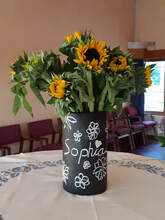
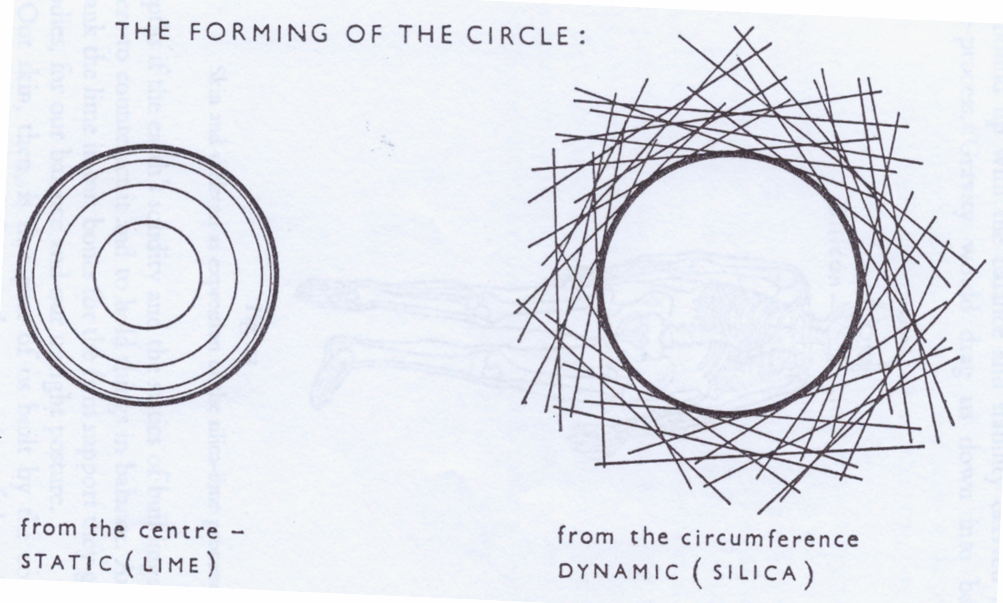
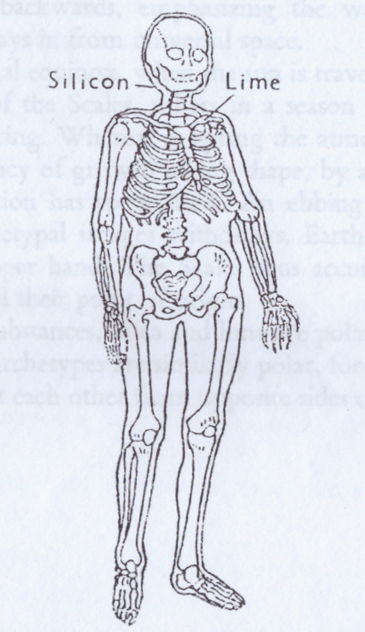
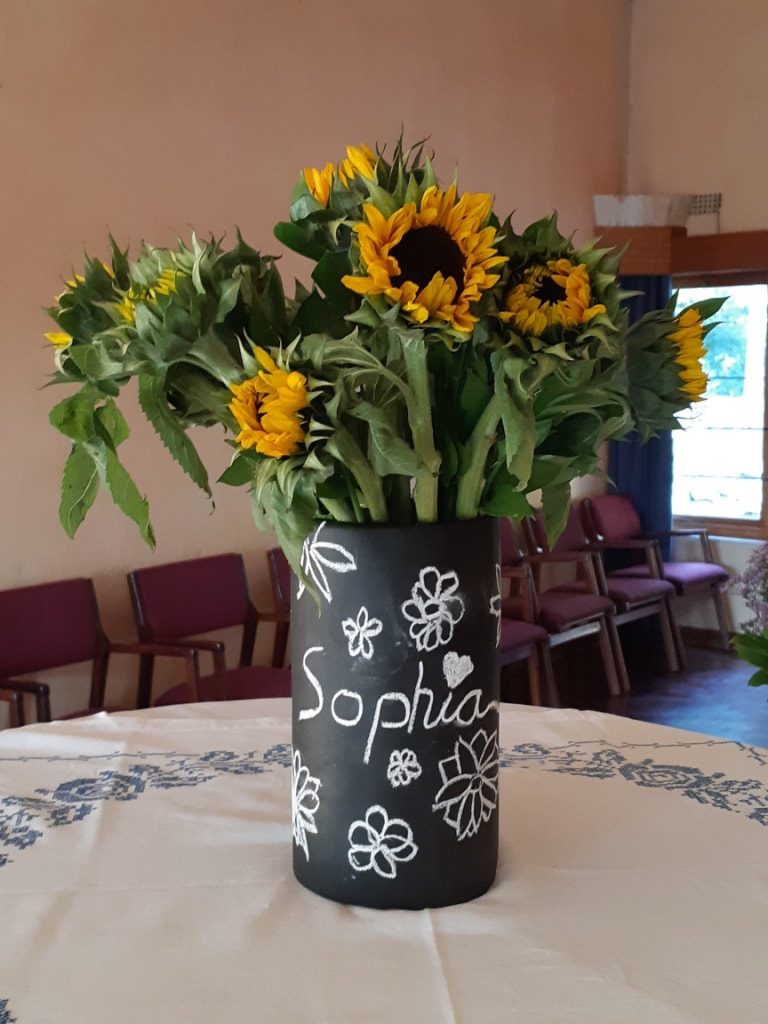
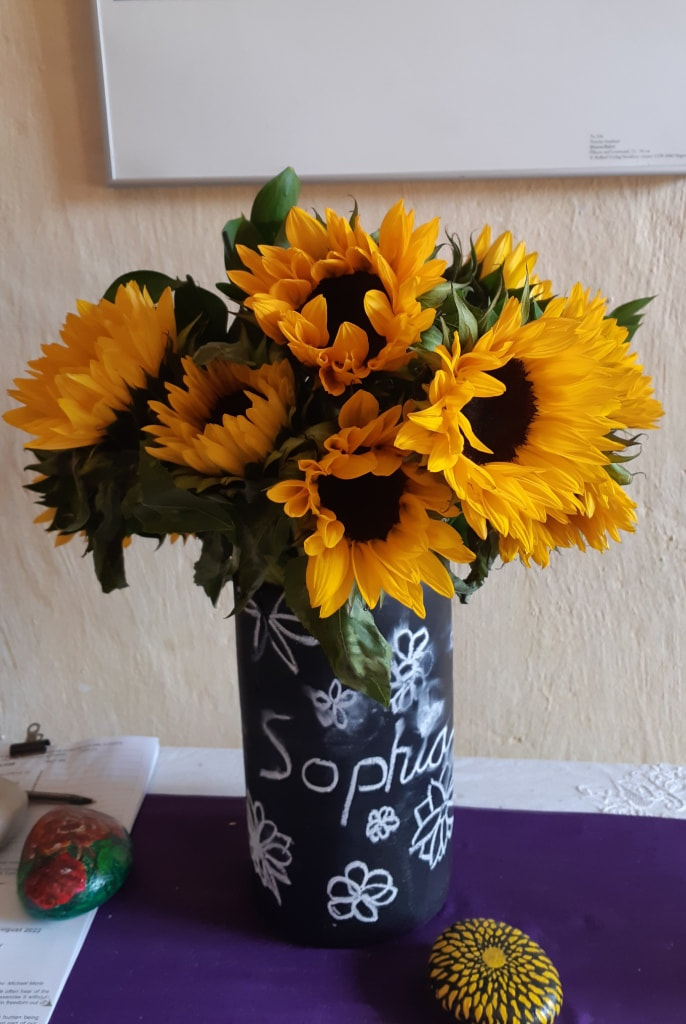
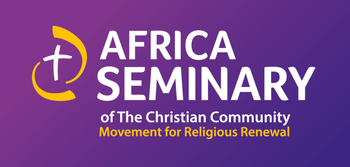
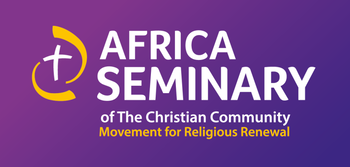


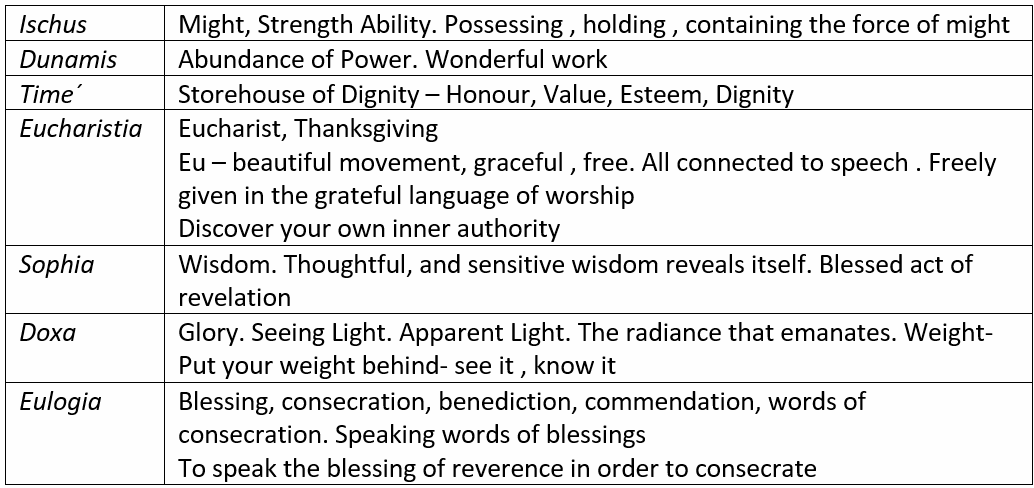
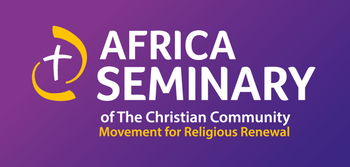
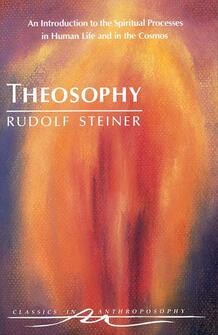

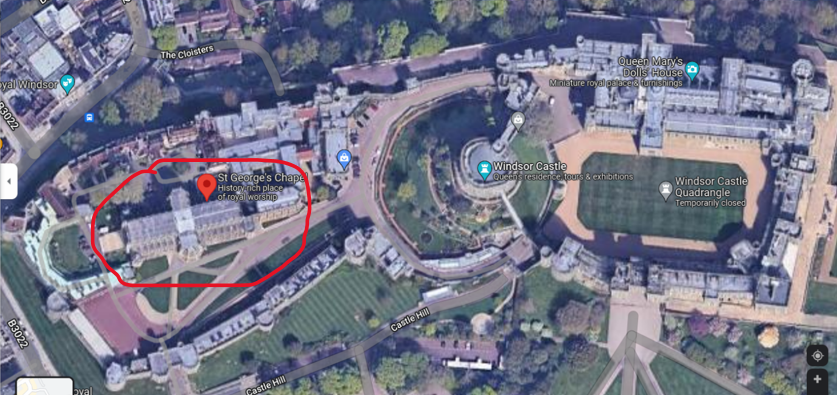
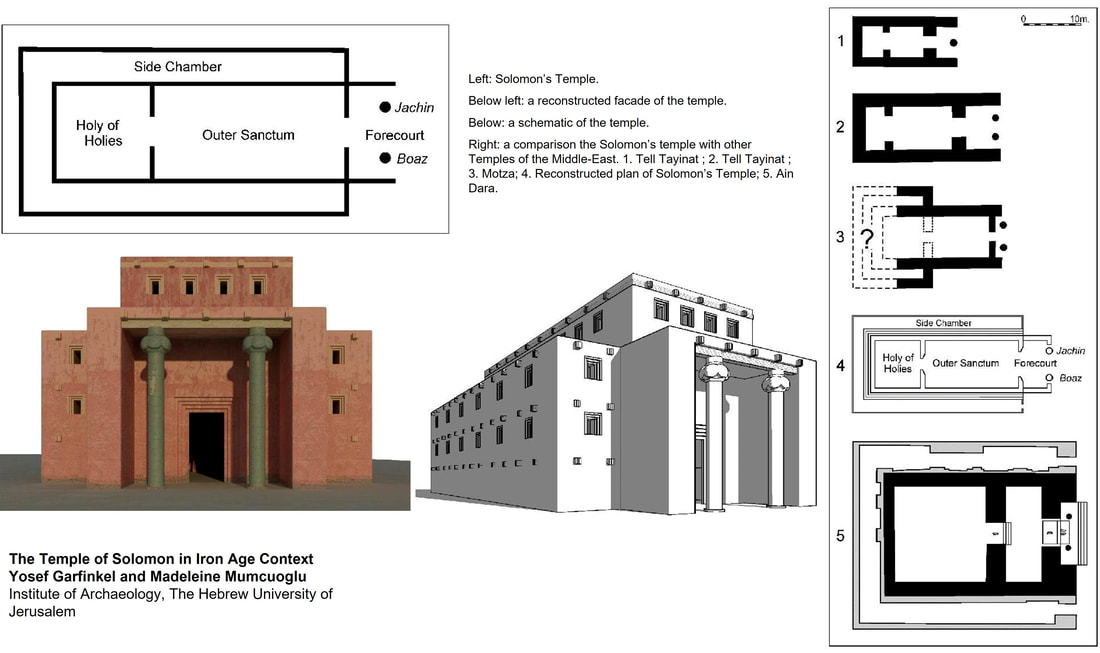
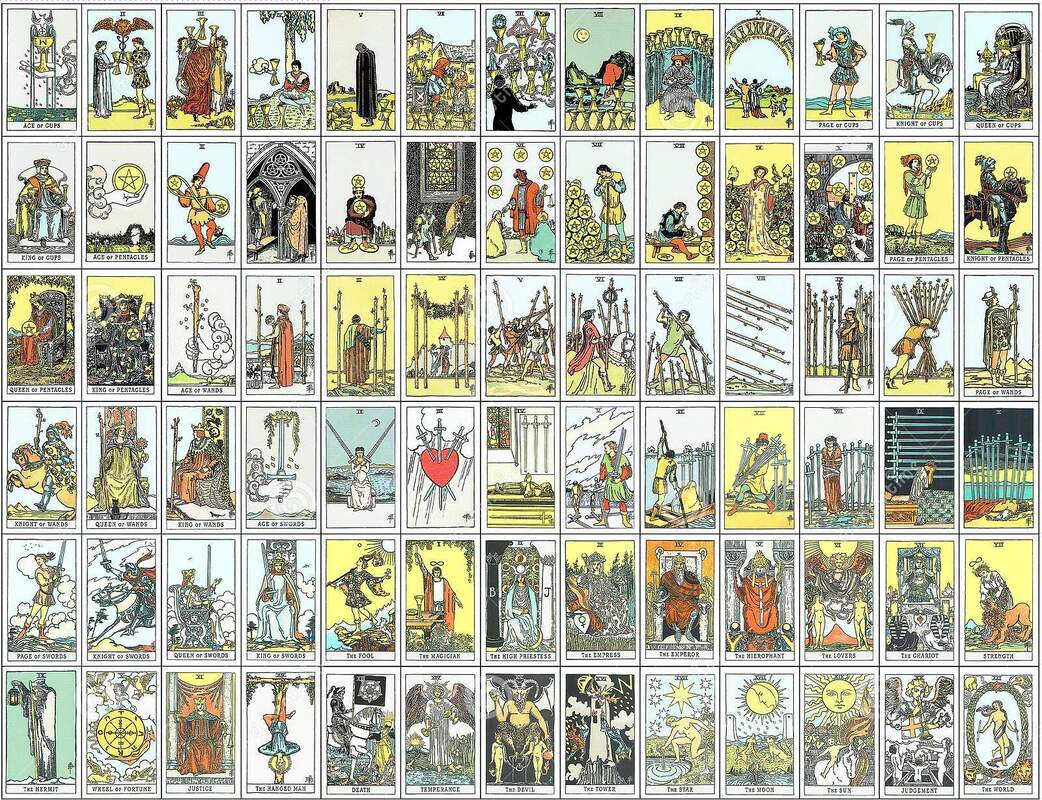
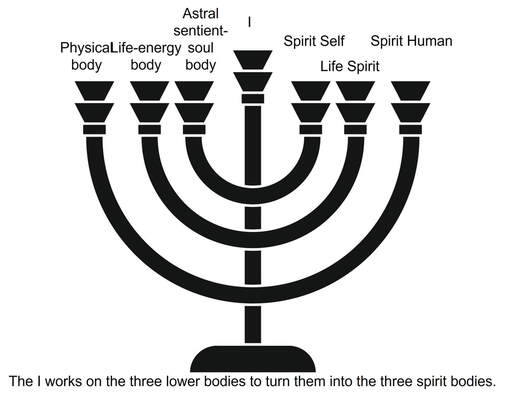
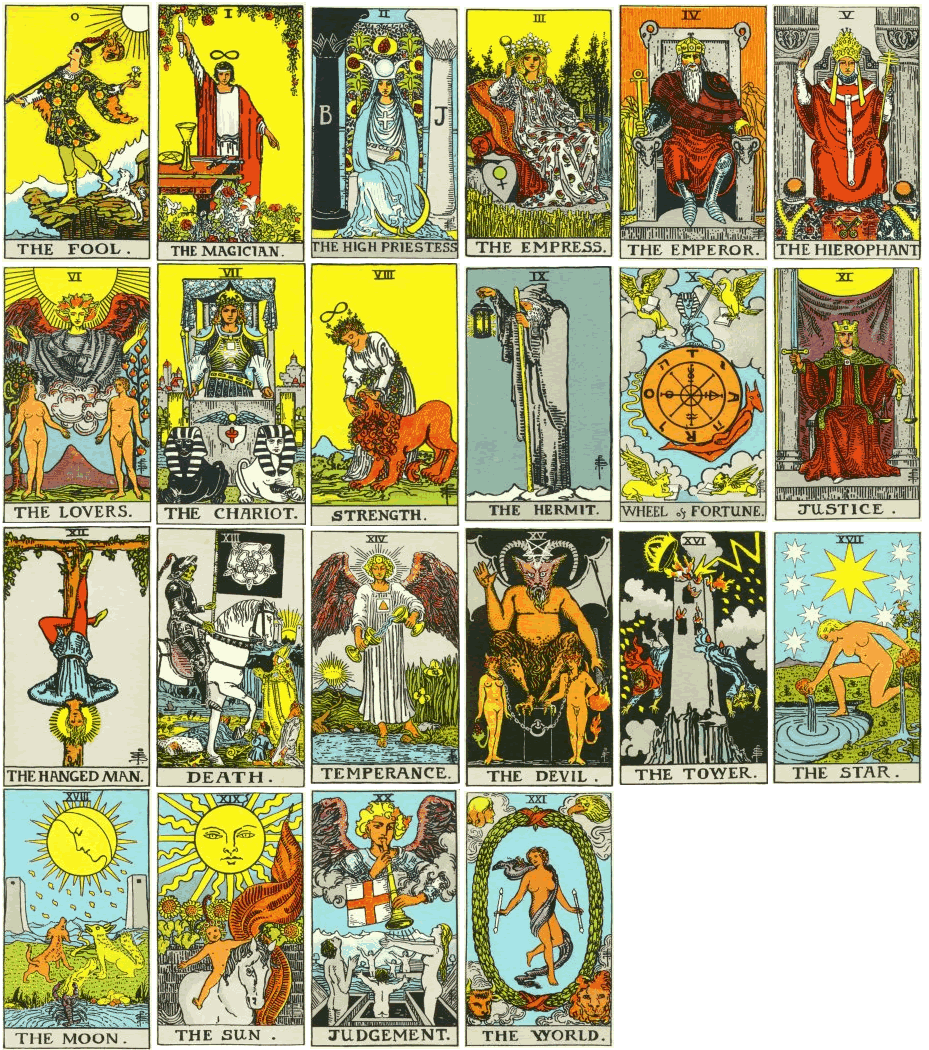
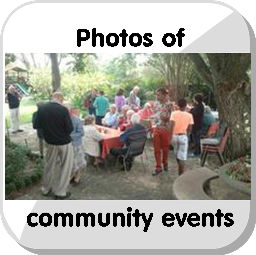
 RSS Feed
RSS Feed